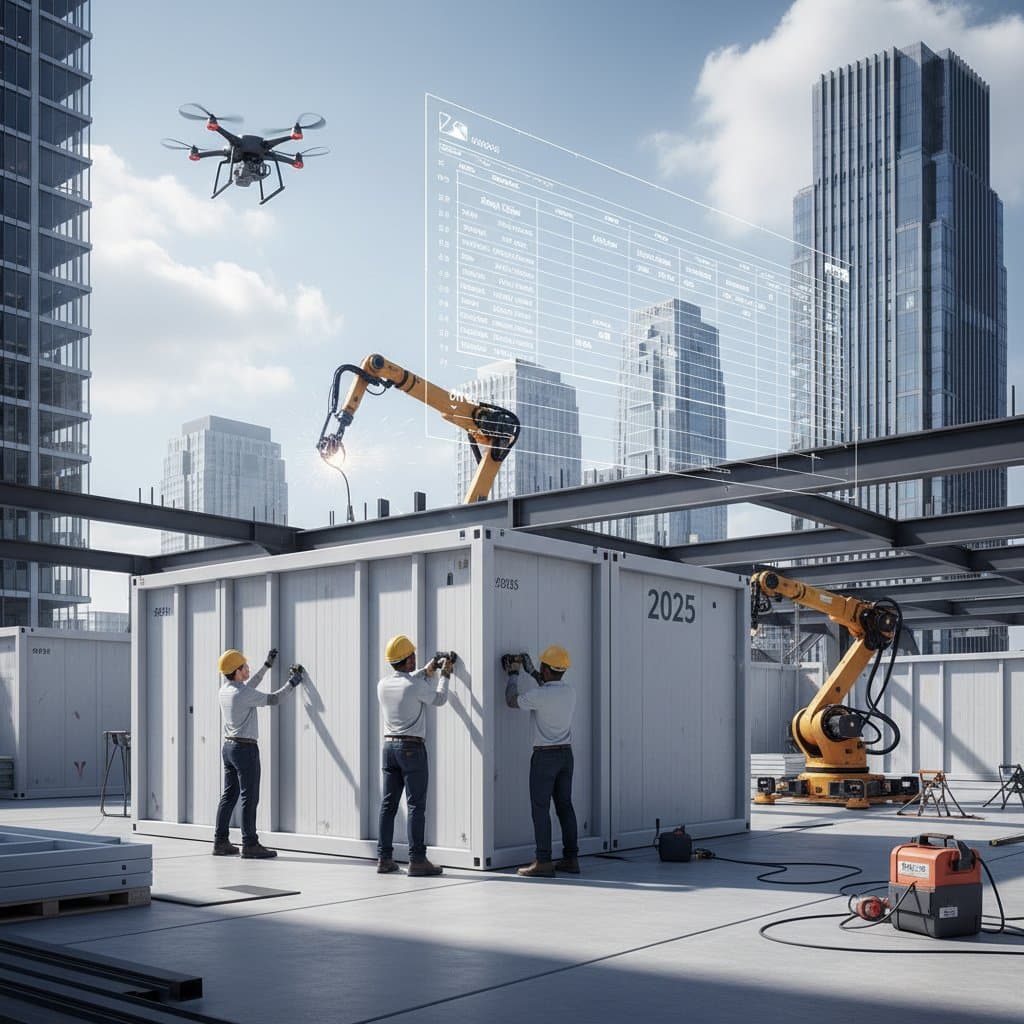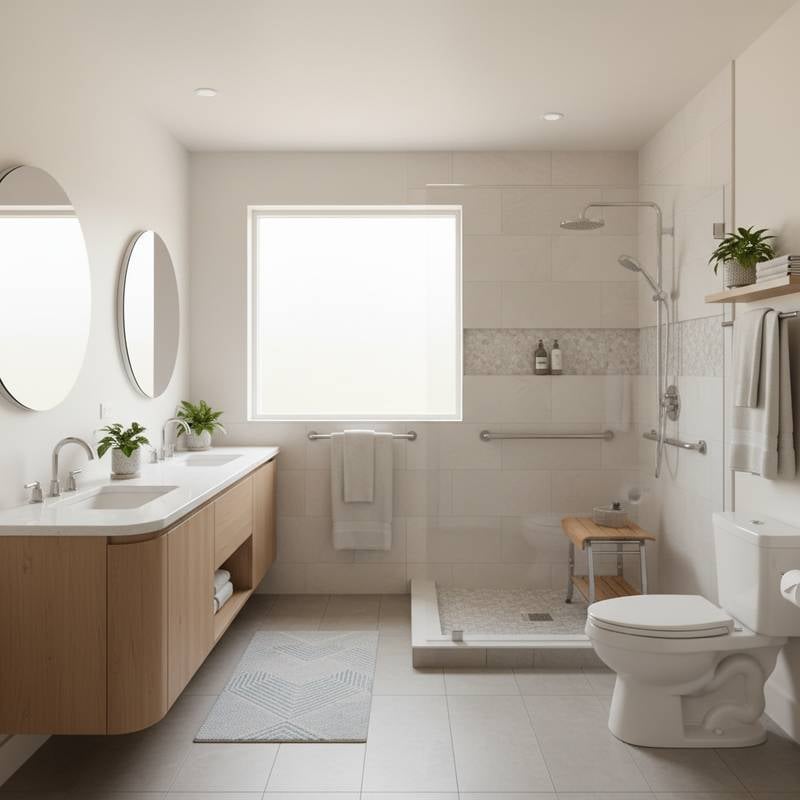Leading Prefab Construction Trends for Contractors in Fall 2025
Prefabricated construction evolves from a specialized technique into a core strategy for contemporary building initiatives. Contractors increasingly turn to prefab to optimize timelines, enhance budget management, and minimize material waste. During the fall season, distinct trends guide the direction of this field. These developments influence project planning, material procurement, and client outcomes.
This overview details essential prefab trends impacting general contractors in fall 2025. Emphasis falls on achieving cost savings, addressing labor dynamics, and leveraging technologies that reshape modular and off-site construction practices.
Essential Highlights
- Adoption of prefab expands across residential and commercial domains, driven by reliable timelines and substantial labor reductions.
- Digital modeling alongside automation dominates prefab planning efforts.
- Hybrid models integrating modular, panelized, and traditional site methods gain prevalence.
- Sustainable materials paired with off-site completion support compliance with rigorous environmental standards.
- Coordinating supply chains poses a primary hurdle for contractors venturing into prefab.
Managing Labor and Costs in Prefab Projects
Prefabrication alters labor management, timeline control, and subcontractor interactions for contractors.
- Labor Expenses: Off-site production lowers on-site labor needs by 20 to 40 percent, enabling leaner crews at the job site.
- Timelines: Modules fabricate concurrently with site preparation, shortening overall durations by weeks.
- Subcontractor Roles: Trades relocate segments of their tasks to factory settings, demanding early design-phase alignment.
- Skill Development: Teams require training in modular handling, equipment lifting, and exact alignments.
Teams that embrace these shifts experience reduced setbacks and elevated quality oversight.
Trend Spotlight: Digital Twin Technology
Digital twins emerge as pivotal assets in prefab construction. These virtual building models oversee phases from initial design through ongoing upkeep.
Impacts on Contractors:
- Enhances teamwork among designers, engineers, and producers.
- Minimizes errors by spotting design issues prior to fabrication.
- Facilitates proactive upkeep once structures occupy spaces.
Digital twins synchronize off-site production with on-site integration, guaranteeing precise module fits upon arrival. Contractors apply these tools to simulate assembly sequences, forecast potential clashes, and refine logistics for smoother deliveries.
Trend Spotlight: Hybrid Modular Systems
Hybrid modular approaches merge multiple prefab techniques for greater design adaptability. Typical setups unite volumetric units for utility areas with panelized elements for primary frameworks.
Contractor Benefits:
- Merges economical production with creative options.
- Eases permitting as certain elements stay site-constructed.
- Lessens hauling difficulties through compact, lightweight components.
Such systems fit ventures requiring personalization alongside rapidity, including urban mixed-use sites or institutional buildings. Contractors select hybrids to navigate site constraints while preserving prefab efficiencies, often achieving 25 percent faster completions compared to full site builds.
Trend Spotlight: Off-Site Finishing for Interiors
Prefab extends past frameworks to encompass full interior assemblies. Production facilities now incorporate flooring, storage units, and appliances prior to module dispatch.
Core Advantages:
- Accelerates site work by limiting finishing tasks.
- Shields against weather interruptions.
- Elevates standards through factory-controlled conditions.
Contractors verify manufacturer specifications on tolerances to secure flawless on-site joins. This trend proves valuable for high-volume residential projects, where prefinished modules cut interior labor by up to 35 percent and enhance occupant readiness upon handover.
Trend Spotlight: Localized Supply Chains
Supply chain volatility prompts contractors to prioritize nearby sourcing for materials and fabrication. Domestic prefab facilities cut transport fees and bolster dependability.
Primary Gains:
- Diminishes freight expenditures.
- Speeds production cycles.
- Streamlines interactions with area specialists and regulators.
Opting for local partners mitigates global shipping risks, ensuring timely arrivals. Contractors build lasting ties with regional suppliers, fostering customized solutions and quicker responses to project adjustments.
Strategies to Optimize Costs in Prefab Initiatives
Sound financial oversight sustains prefab competitiveness.
- Standardize Configurations: Reuse layouts to shorten factory preparation.
- Streamline Selections: Limit options in surfaces, hardware, and fittings.
- Initiate Planning Promptly: Align trades thoroughly from the outset.
- Engage Nearby Producers: Shorten hauls and simplify oversight.
- Consolidate Agreements: Partner with unified design-build entities for fluid exchanges.
Choices in preliminary phases directly shape project performance. Contractors who apply these tactics often realize 15 to 25 percent overall savings beyond labor reductions.
Basis for Cost Estimates
Data presented draws from nationwide averages, including contractor projections, vendor pricing, and current initiative reviews. Factors like choices in materials, area wage scales, and haul distances create variances.
Teams refine these through site-specific inquiries and competitive quoting. Regular updates to local benchmarks ensure accurate budgeting for upcoming falls.
Evolving Workforce Needs
Prefab reshapes labor profiles. Conventional trades like framing shift toward assembly and transport duties. Contractors update training to cover:
- Accurate placement of completed modules.
- Safe crane handling for positioning.
- Linking preassembled units to site infrastructure.
- Rigorous checks and verifications.
Such preparations boost on-site safety and output. Programs focusing on cross-trade skills prepare teams for multifaceted roles, reducing dependency on specialized hires.
Real-World Application: Hybrid Prefab in a Mixed-Use Project
A regional contractor oversaw a multifunction development employing hybrid prefab, with steel modules for living levels and panels for commercial zones.
Outcomes:
- Timeline shortened by 22 percent.
- Waste lowered by 30 percent.
- Savings reached approximately $40 per square foot.
This case demonstrates prefab's tangible impacts when integrated thoughtfully. The approach not only met deadlines but also exceeded sustainability targets, appealing to eco-conscious developers.
Sustaining Prefab Structures Over Time
Prefab edifices demand routine care akin to standard constructions, yet offer streamlined update paths.
Upkeep Strengths:
- Detachable panels simplify access for enhancements.
- Standardized records aid repair efforts.
- Durable finishes withstand use better from factory origins.
Providing service plans fosters enduring partnerships and steady income. Contractors position themselves as full-lifecycle advisors, guiding clients through modifications and efficiency upgrades.
Navigating Prefab Challenges
Prefab delivers clear gains, yet demands attention to hurdles.
Typical Issues:
- Hauling limits for oversized units.
- Constraints on post-design alterations.
- Exact syncing of production and site activities.
- Initial outlays for planning and technical work.
Mitigation involves thorough timelines, fixed early designs, and open stakeholder dialogue. Proactive measures like contingency planning preserve project momentum.
Refining Operations for Prefab Success
Entering prefab prompts structural business changes. Options range from manufacturer alliances to internal production setups.
Transition Tactics:
- Alliances: Team with local fabricators for steady access.
- Unified Delivery: Merge design and build under single terms.
- Self-Sufficiency: Establish onsite facilities for quality and timing command.
These investments yield higher margins long-term. Contractors assess scale and expertise to select fitting paths, often starting with pilots to test viability.
Insurance Aspects in Prefab Work
Prefab reallocates certain liabilities to producers, though site hazards remain contractor responsibilities.
Critical Points:
- Review policies for off-site fabrication coverage.
- Secure transport insurance for module journeys.
- Clarify roles in joint ventures to avoid overlaps.
Consulting specialists ensures comprehensive protection. This safeguards against unforeseen events, maintaining financial stability across projects.
Building a Competitive Edge with Prefab
Embracing prefab positions contractors for fall 2025 dominance. By integrating trends like digital twins and hybrids, teams achieve labor savings up to 30 percent while delivering superior results. Focus on training, partnerships, and risk strategies unlocks sustained growth and client satisfaction.











